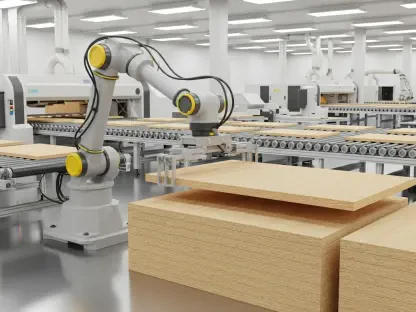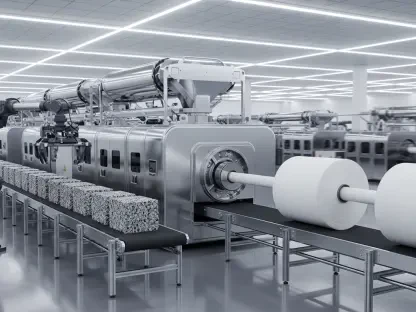The shifting landscape of the furniture manufacturing industry reveals how economic conditions, international trade policies, and supply chain issues are influencing company strategies and operations. Recent years have seen significant challenges and strategic shifts among furniture makers in the US, Canada, Mexico, and Asia, driven by economic policies and large-scale market changes. The following article delves into the specific challenges and strategic moves by key industry players, highlighting how their responses to these external pressures reshape their operations and business models.
Supply Chain Disruptions and Plant Closures
Progressive Furniture, once a robust player in the furniture manufacturing industry, has faced severe challenges, compelling it to shut down its North Carolina operations. The crux of the issue lies in the severe disruption brought about by the closure of its primary supplier, Baja Wood, located in Mexico. The reliance on Baja Wood, which supplied 60% of Progressive’s products, illustrates the vulnerability of depending heavily on international suppliers. The closure resulted from labor disputes and wider worker issues, significantly disrupting Progressive’s supply chain and making it nearly impossible to maintain operations.
This scenario underscores a broader challenge within the industry: the risks associated with extended international supply chains. Dependence on foreign suppliers means that geopolitical events, labor disputes, and regional economic instability can have profound implications on production continuity. For Progressive Furniture, the operational setbacks experienced due to these supply chain issues highlight the need for a more resilient and diversified approach to sourcing materials and maintaining steady production lines. This situation serves as a critical lesson for other companies navigating similar dependencies.
Tariffs and Trade Policies Under Trump
The trade tariffs introduced during Donald Trump’s presidency had a significant impact on the furniture industry, serving as a pivotal influence on production decisions. These tariffs were designed with the strategic intent to encourage companies to move their manufacturing back to the United States by making foreign imports less economically viable. The broader goal behind this policy was to invigorate domestic production and ultimately boost the American economy, making local industries more self-reliant and productive.
However, the implementation of these tariffs introduced a new layer of complexity for businesses heavily involved in cross-border trade. Companies found themselves navigating a landscape where import duties altered cost structures, making some previously economical options less viable. This forced many furniture manufacturers to reevaluate their global operations and consider relocating their production facilities closer to their primary markets. While the long-term effect of these tariffs aimed to foster a robust local manufacturing sector, the immediate aftermath necessitated significant strategic shifts and adaptations from businesses to manage these new economic realities effectively.
Strategic Relocation and Geographic Priorities
In the face of these shifting economic policies, Prepac Manufacturing exemplifies a company that proactively adapted its strategies. Unlike Progressive Furniture, Prepac saw the changing landscape as an opportunity to realign and consolidate its production in North Carolina even before the trade tariffs were formally introduced. CEO Nick Bozikis articulated that this move was rooted in a strategic analysis of market demographics and logistical advantages. By aligning production with its primary market based on the US East Coast, Prepac aimed to capitalize on reduced transportation costs and improved delivery times for its core customer base.
This foresighted decision underscores the importance of anticipating market changes and positioning operations advantageously. Prepac’s strategy not only mitigated the impact of the tariffs but also underscored the broader trend of reshoring production in response to changing economic environments. By shifting their operations closer to their main market, Prepac has helped ensure more consistent production flows and greater control over their supply chain. This proactive approach has provided them with competitive advantages, showcasing how strategic relocations can effectively align with market demands and regulatory changes.
Economic Pressures and Consumer Spending
The furniture industry’s current economic challenges are further compounded by broader economic pressures affecting consumer spending behaviors. Dan Kendrick, president of Progressive Furniture, emphasized the economic pressures that have strained the market, particularly for mid-to-lower priced products. Rising living costs have significantly affected consumer affordability and credit access, directly influencing buying habits and the demand for new furniture. This economic squeeze has made consumers more cautious about discretionary spending, leading to decreased demand for furniture, particularly in non-premium segments.
This scenario reflects broader economic realities where high inflation and stagnant wages have reduced disposable income, leading to more frugal consumer behavior. Businesses find themselves navigating a more challenging market environment where attracting cost-sensitive consumers requires innovative pricing strategies and value propositions. This shift in consumption patterns necessitates manufacturers to rethink their product offerings and pricing models to remain competitive and appealing to a financially constrained customer base. These dynamics illustrate the intertwined nature of economic policies, consumer behavior, and market demands shaping the furniture industry’s present and future.
Labor Union Perspectives and Investment Environments
The narrative of industry transitions extends beyond corporate strategies and economic metrics to incorporate the perspectives of labor unions, particularly those representing Canadian workers. Unifor, a prominent union, criticized Prepac’s consolidation of operations, attributing it to corporate greed and the challenging economic policies under Trump’s administration. According to Unifor, these policies have fostered an unfriendly investment climate in Canada, making it less attractive for corporations to maintain or expand operations there.
This criticism highlights a contentious aspect of industrial shifts where labor practices and corporate strategies may sometimes clash. Union voices emphasize the human impact of these relocations, arguing that the prioritization of cost-saving measures and strategic alignments often comes at the expense of worker welfare and job security. The labor union perspectives add depth to the discussion by illuminating the social and economic costs associated with these strategic business decisions. These arguments signal the need for a balanced approach that considers both corporate profitability and workforce stability, suggesting that future strategies could benefit from integrating more comprehensive labor welfare considerations.
Industry Trends and Strategic Adaptations
The evolving furniture manufacturing industry landscape showcases how economic conditions, international trade policies, and supply chain issues shape company strategies and operations. In recent years, furniture makers across the US, Canada, Mexico, and Asia have faced significant challenges and embarked on strategic shifts. These shifts are driven by economic policies, global trade dynamics, and large-scale market transformations. This article explores the specific obstacles and strategic decisions by prominent players in the industry, illustrating how they navigate these external pressures. By adapting to these influences, companies are reshaping their operations and business models to remain competitive. The focus is on how they respond to economic policies, supply chain disruptions, and market trends, revealing a dynamic industry in constant evolution. This comprehensive analysis provides insights into the resilience and adaptability of furniture manufacturers as they strive to innovate and maintain their market positions amidst ever-changing global conditions.









